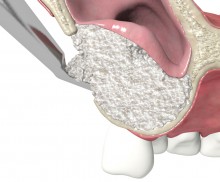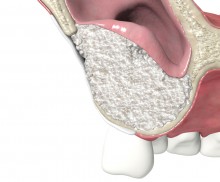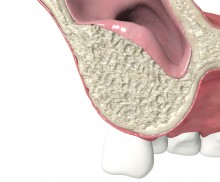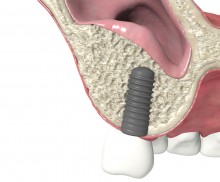Lateral sinus lift - two stage
|

The reliability and high predictability of grafting materials for the sinus lift procedure are well documented. In addition, long-term volume stability is of much importance when the time period between the sinus lift procedure and the implantation is long. Thus, in the two-stage procedure, a healing time of 6–9 months should be anticipated before implant insertion following augmentation with cerabone® or maxresorb®. When applying an allogenic material, such as maxgraft®, it is recommended to mix it with cerabone® or maxresorb®. Applied materials should be mechanically stable during the first months to keep the Schneiderian membrane lifted until the space underneath is filled with new bone matrix. A too-fast resorption of the allogenic material could lead to a loss of volume, which may in turn affect the stability of relatively long implants.
Placement of a Jason® fleece prior to application of relatively sharp bone graft granules protects the Schneiderian membrane from damage and offers a cost-effective alternative to a barrier membrane. If a small perforation of the Schneiderian membrane is already present, a collagen membrane (e.g. collprotect®) may be used to seal the perforation.
In order to promote an undisturbed healing, it is recommended to cover the sinus window with either a Jason® fleece or a membrane (e.g. collprotect® membrane). If an additional lateral augmentation is planned, it is recommended to cover the augmentation site with a slowly resorbable membrane, which is more suitable for the reduced width of the ridge. The Jason® membrane stabilizes the augmentation site and ensures a long-term barrier function, ideal for an undisturbed osseous regeneration.
Please Contact us for Literature.

























